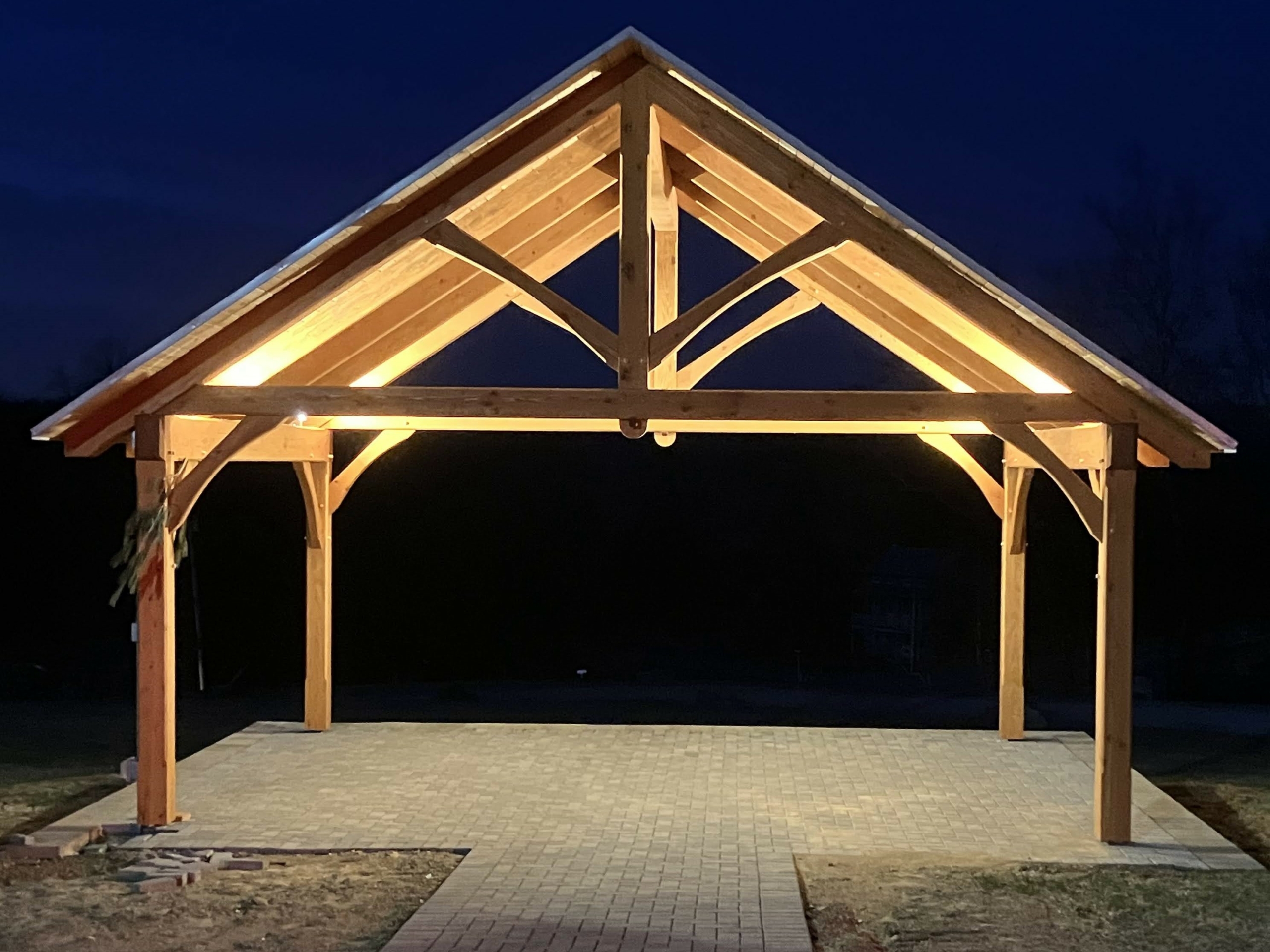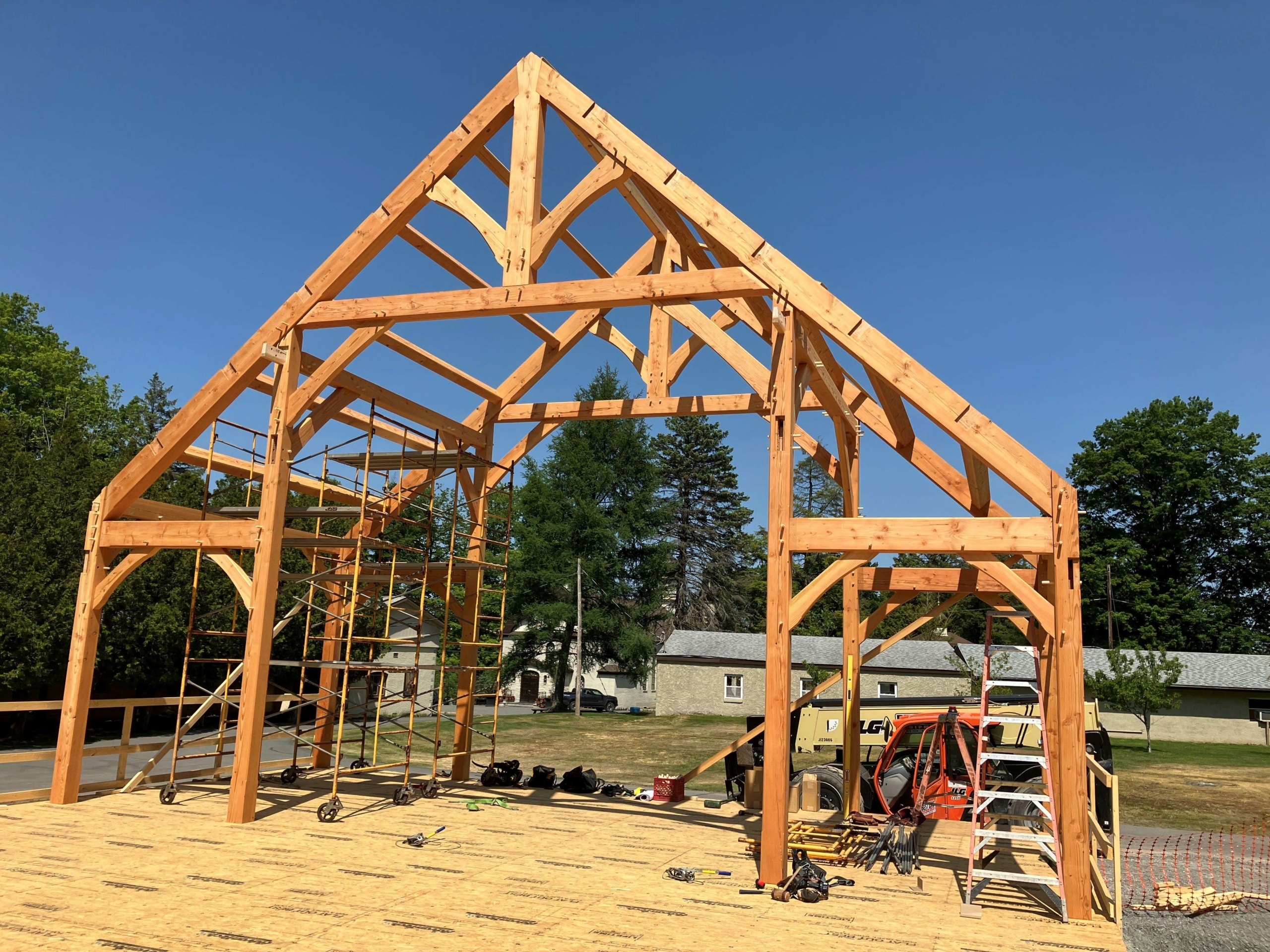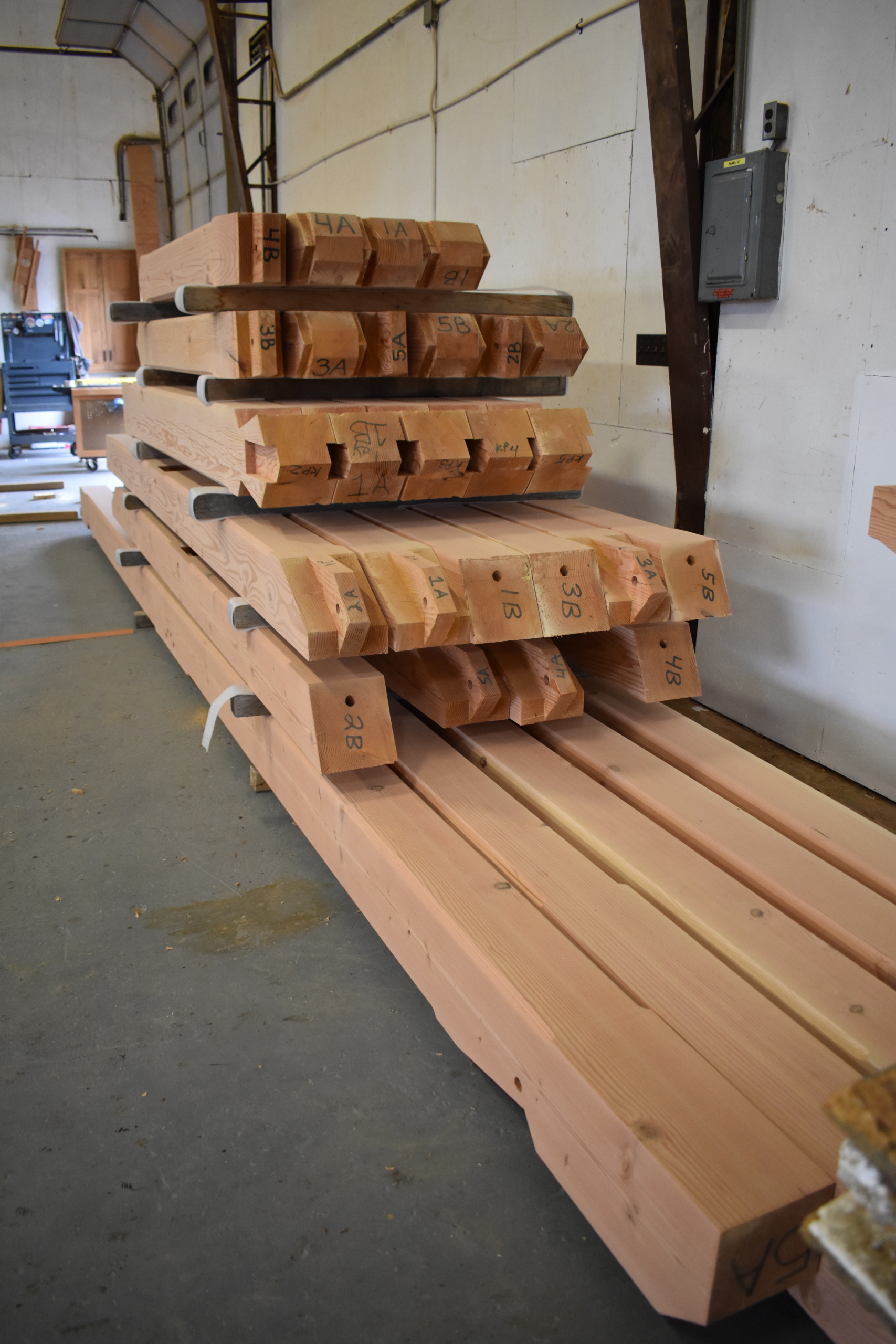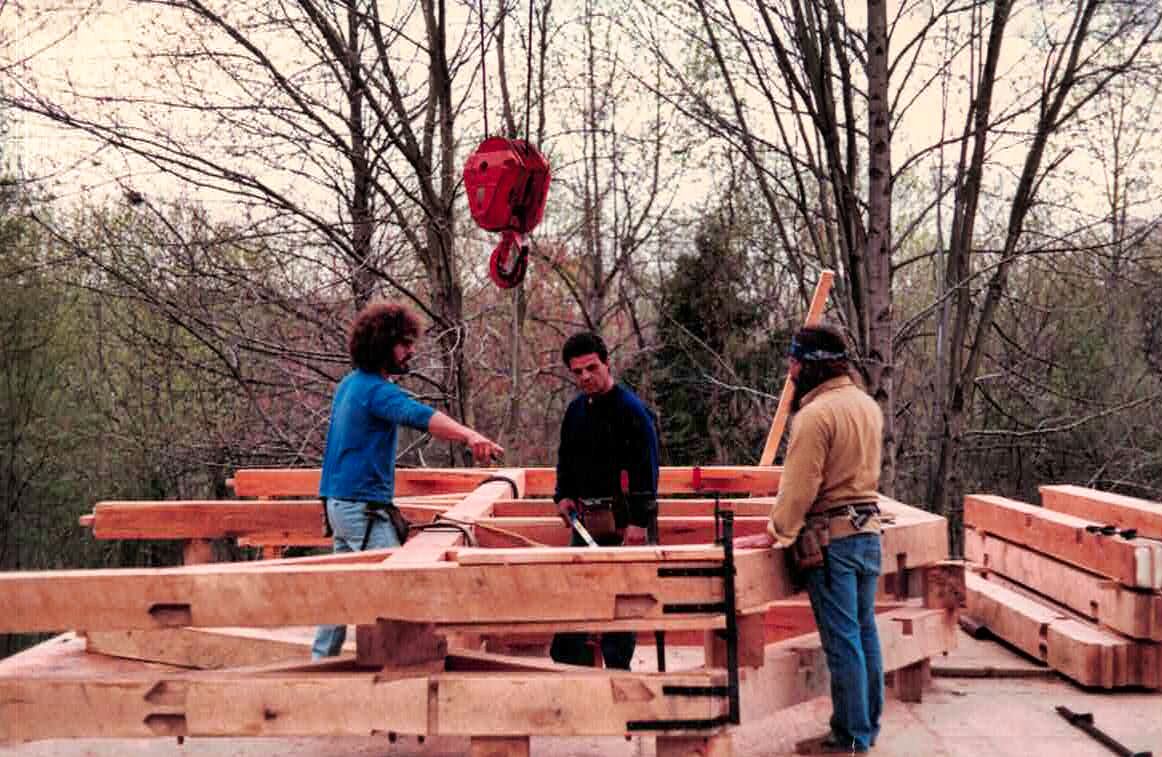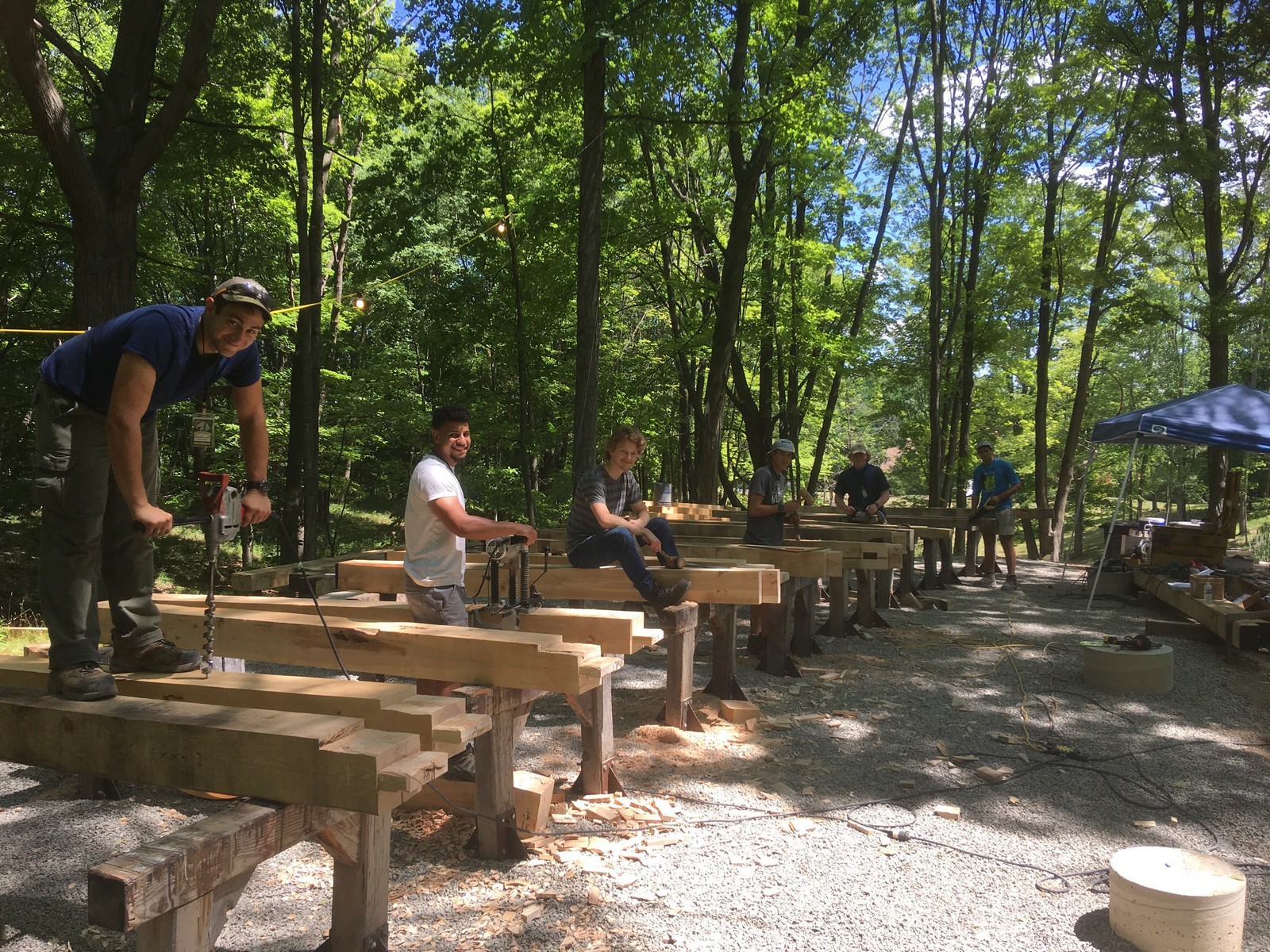Not too long ago a young engineer who had just discovered the wide world of timber framing visited our shop. He was eager to absorb as much information as possible and during the course of our two hour conversation he asked, after I told him that I’ve been in the craft since 1986, about the changes that have occurred in timber framing during that span of twenty six years. Usually I just blurt out stuff with first running it through my mind. This time, however, I engaged in some reflection and quickly realized that the response to his question could take up most of an afternoon. So I saved him the pain and hit only on the biggies. His question, however, hung with me long after he left. Change is an interesting topic. Too little of it can lead to boredom; too much can lead to stress.
It can be gradual or it can be sudden. It can be subtle or it can be huge. Not seeing it coming can make you feel stupid when it hits; seeing it coming can propel you to prepare or maybe make you anxious. In any case it happens. It is a constant. So I though it may be an enjoyable for me, and hopefully for you, if I were to give my take on these changes
Be forewarned, these changes and explanations are from my perspective and may have only a casual connection to reality.
Companies
The Timber Framers Guild, initially named the Timber Framers guild of North America held its first conference in 1985. I started timber framing in 1986. While I remember there being a few companies having a force of ten or more people the vast majority had a single digit workforce. Moreover, I can only remember four companies that had anything close to twenty people but I remember quite a few that had two to five people. Today, the majority of companies still have ten or less people, but the number of companies with
more than that has increased significantly. In checking websites I am surprised that many companies do not give that information.
The east coast had, and still has, the highest concentration of timber framers. When I think back to the late 1980’s I remember there being about twenty companies–roughly the same number that are today. However, only about half a dozen of the original companies remain. I’m not sure, however, if Pennsylvania is representative of the other states.
In the early years the inevitable comment most, if not all, of us heard when we tried to define timber framing to people was “Oh, you mean like log homes?” So, those of us who are reactive tried our best to distance ourselves, our companies and our craft from the log home craft and industry. But try as some of us did we came to see that there were many threads which connected us and soon there were log home companies that started timber frame divisions, although I can’t think of more than a very few timber frame companies that started log divisions although most of us did begin incorporating round and organic timbers into our frames.
It used to be that a timber frame company, after having carved a frame, would erect that frame and, conversely, if a company raised a frame it was a frame that they carved. It was simply a given. This given is no longer true. There are a number of timber frame companies that either sub out the erection or do not include this service in their bid or contracts. Usually, such companies are those who use a CNC machine–but, not always.
There are some timber frame companies that are essentially brokers. They sub out the design work, they sub out the frame carving to a CNC company and then they sub out the erection, or any combination of the above. With more sarcasm than humor, such hands off companies are now commonly referred to as virtual timber framers. A number of years ago I was visiting one of the largest timber suppliers in North America. They had recently purchased a CNC machine and were selling time on it to those timber frame companies who wanted to avail themselves of that opportunity. In fact that very day they were using the machine to cut a timber frame for a company several states south of us.
Standing near the control panel I noticed a packet of papers with the name and logo of this particular timber frame company and right there below their name and above their logo was the phase “Hand Carved Timber Frames”.
– A.F. Zaya


